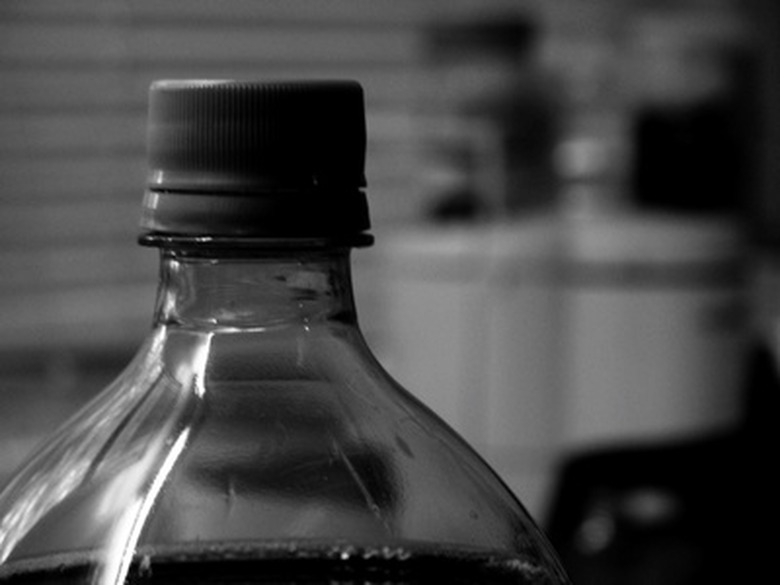The Advantages Of Acrylic Plastic
Acrylic is a tough transparent plastic, an alternative to glass, that first appeared on the market as the trademark, Plexiglass™. It is sold under several different names: Lucite™, Optix™ and acrylic glass, but its composition remains the same. Chemically, acrylic is a synthetic polymer called polymethyl methacrylate, or PMMA. Because it is tough and shatter resistant, it was used during World War II for many things, including periscopes, canopies and gun turrets. Its shatterproof properties have made it ideal for large aquarium tanks, protective shields at ice rinks, forklift guards, helmet visors and viewing ports on submarines.
TL;DR (Too Long; Didn't Read)
Acrylic is a tough plastic with half the weight of glass, and which can be colored or transparent. Applications include windows, aquarium tanks, outdoor signs, and bath enclosures.
Easily Fabricated and Shaped
Easily Fabricated and Shaped
Acrylic, when heated to 100 degrees, can be easily molded into a variety of shapes such as:
- bottles
- tubes
- picture frames
- figurines
As it cools, acrylic holds its formed shape. This makes it easy to shape large sheets into the bow-front aquariums and skylights. It can be machined, drilled or sawed like wood and soft metals. When it is being shaped, molds made from wood or plastic can be used, a cost savings for manufacturers. In the 1960s designers began using acrylic in furniture and it's been incorporated into some guitar designs. It also can be easily shaped for dentures.
Weather Resistant - Retain Color
Weather Resistant – Retain Color
Acrylic's toughness makes it ideal for home windows and lenses for car headlights. Acrylic letters in outdoor signs hold up indefinitely, resist weathering and protecting the colors. Acrylic paints for artists aren't affected by light, so they retain their color. Indoor, hanging and wall signs are easily lit due to acrylic's clarity. Sculptors and glass artists use acrylics for outdoor designs because of the material's weather-resistance and light-refracting capacities.
Lighter than Glass
Lighter than Glass
Acrylic weighs 50 percent less than glass, making it easier to handle. Acrylic shoes, dentures and artificial nails are more comfortable due to the polymer's light weight. The majority of composite dental fillings are made of acrylic, and it's used in cosmetic surgery. Tiny microspheres of PPMA in fluid are injected under the skin to reduce scars and wrinkles permanently. Acrylic skylights increase light, and their addition to roofs does not significantly increase the load on a home's foundation or frame.
Impact Resistant
Impact Resistant
Acrylic has a tensile strength greater than 10,000 lbs. per square inch with impact resistance six to 17 times greater than ordinary glass. Under high impact, it won't shatter and, if it does break, it fractures into large, dull-edged pieces. This quality of acrylic is an important safety feature in shower doors, bath enclosures, sliding glass doors and security barriers in correctional facilities. It also is used for safety enclosures at hockey rinks and ball fields.
Highly Transparent
Highly Transparent
Acrylic maintains its optical clarity and doesn't yellow with age, remaining transparent. This is important for plane windows, greenhouses, skylights and store-front windows. It has applications in surveillance mirrors and windows where its durability is valued. It is resistant to UV light, and some manufacturers add coatings of acrylic for extra protection to signs, motorcycle shields and exterior windows. It is used in food sneeze guards in cafeterias, self-serve salad bars and grocery take-out displays.
Cite This Article
MLA
Williams, Nancy. "The Advantages Of Acrylic Plastic" sciencing.com, https://www.sciencing.com/advantages-acrylic-plastic-7461740/. 11 May 2018.
APA
Williams, Nancy. (2018, May 11). The Advantages Of Acrylic Plastic. sciencing.com. Retrieved from https://www.sciencing.com/advantages-acrylic-plastic-7461740/
Chicago
Williams, Nancy. The Advantages Of Acrylic Plastic last modified March 24, 2022. https://www.sciencing.com/advantages-acrylic-plastic-7461740/
